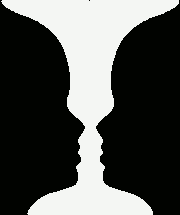Cognition – Intuition – What Is Intuition?
by pre., Friday, February 6th, 2009.At the Transcendence Institute we often describe a thorough gut-level understanding by using the analogy of catching a ball. In order to learn to catch a ball you don’t go and study the equations which govern the parabolic arc under which the ball will fly, or the science behind the air pressure which drives the winds which may affect it’s course. Learning these things will certainly increase your understanding of how a ball moves, and if you intend to build a robot that catches balls it’s probably your first step, but they will not help you actually catch that ball.
This gut-level understanding is called Intuition. When you intuitively know something you don’t necessarily know how you know it, if you try to explain you’ll likely just be confabulating. A great deal of your understanding is intuitive understanding and even that which is explicit understanding that you can explain exactly is grounded in and based on a more intuitive foundation.
Examples: How to move your arm, how to recognise an apple, how catch a ball, how to talk, how to walk, how to run, skip and jump. If asked to demonstrate a fiendishly difficult task like winking an eye you’ll be able to do it but if asked to describe how to wink an eye you’ll likely be lost at sea. Even if you’re not you’ll probably just start talking about things like signalling your face to contract certain muscle groups in the right pattern, without any real clue how to describe those particular patterns.
Explicit understanding is different. If you explain your explicit understanding to someone, they too will have that understanding. If you give someone your granny’s cookie recipe, they’ll be able to make it as well as you can. However even this recipe, the explicit understanding, is just a tower of intuitive understanding. It relies not only on your knowing how to break an egg into a bowl, but also how to recognise an egg, how to pick it up, what will happen when you smash it against the bowl.
How Intuition Works
Firstly, in a way much more complicated than the gloss we’re about to put over it. The best explicit understanding in the world of these issues still glosses over much, and we only have time here to gloss over most of that gloss.
We have previously mentioned Hebbian Learning, a model of how neurons feeding their outputs into each others inputs can be trained to recognise patterns. To replicate them. To signal how strongly they are recognising a pattern. It’s a strict mathematical model, you don’t need anything other than maths to build a Hebbian network. Making a Hebbian network run is not an intuitive hand-waving affair like teaching a cookie recipe. We have an explicit understanding of the way these abstract neurons interact. We can build machines which work this way and they appear to work in similar ways to at least some of the neural clusters in our brains.
When repeatedly exposed to the same pattern on inputs, this type of network will begin to predict the rest of the pattern. If you wire it into a pitch recognition system and play a tune to it over and over again it’ll fairly quickly start to recognise that tune, even pre-empt it. Furthermore it can learn other tunes, and finish off whichever one you start to play.
We humans who designed these networks have a very good explicit understanding of exactly what each neuron does, and a fairly good understanding of how the whole group of them interact. We know why the network can finish off our pattern. The network itself, however, has no explicit understanding at all. It’s just a mathematical model.
Now consider: The model manages to complete the pattern, so it must ‘know’ in some sense what the rest of that pattern is. Without any understanding of it’s existence, without any understanding of it’s mechanism, without any understanding of what a pattern is or the mathematical rules which is follows, it still ‘knows’ what the rest of that pattern is well enough to complete it.
This, then, is intuition. And there’s millions of examples in your head. You have a neural network which recognises a door. You have one which recognises your front door. You have an uncountable number of these intuitions and you got them all by exposure to enough patterns to be able to classify and predict them.
Feelings
So how does this roughly-Hebbian pattern recognition system come into your consciousness? How can you tell if you have one and what it’s telling you?

There are two famous optical illusions which give a big clue here. The first is the Necker Cube, an ambiguous rendering of a wire-frame cube which could be facing forwards or backwards, and the second is known as Rubin’s Vase, in which you see either a picture of a vase or else of two faces in profile, so close their noses are almost touching.

When looking at these illusions, how is the fact of “Forwards” or “Face” or else “Backwards” or “Vase” transmitted to your consciousness?
The answer is that they become part of your consciousness. You don’t look at the cube and have some number change on a heads-up display like a Terminator robot. You don’t see lines literally flash around the faces with a “Face Recognised” pop-up window in your visual system. The two intuitive systems in conflict as you stare at those images fight it out, one or the other wins the battle and suppresses the alternative and you’re whole visual scene readjusts to reflect the change.
Remember, as we discussed last week, your consciousness is essentially your intuitive understanding of yourself, your Hebbian Learning systems focused on learning patterns like “How do I feel today” or “Am I happy”?
You are, at all times, making thousands upon thousands of intuitive judgements. Classifying and predicting your environment and your own body’s sensations and even your own state of mind. Right now you’re intuitively recognising many letters every second, and many words based on those letters, and many possible sentences of which you narrow down (hopefully) the one written. You’re recognising and classifying your thoughts about these sentences, fitting the concepts into your current knowledge, and you’re barely conscious of any of it.
Your intuition is already sophisticated beyond our understanding, refined and useful for getting through your life to an extraordinary degree. However you, quite rightly, still question it. Not usually when you’re wondering if that bad scrawl is a letter 0 or a number 6, more often when you’re assessing much more abstract and unquantifiable things: Am I being followed? Is this a dangerous situation? Does he fancy me?
Next week we’ll discuss why you tend to only be conscious of these more abstract things, and later go on to discuss how to listen more closely to your intuition, and assess it’s reasonableness.



